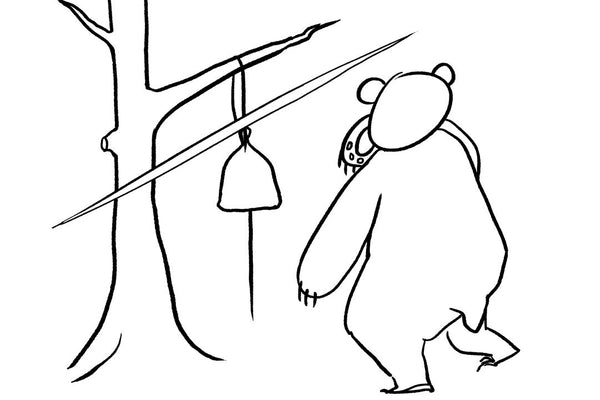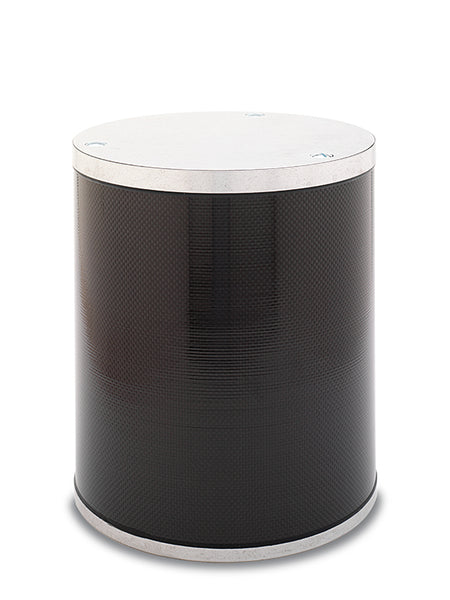Bear cans are slowly becoming a staple of the outdoor experience. Every year more national and state parks are requiring visitors to carry bear canisters. With their increasing popularity, it would be a good idea to learn more about them.
Why do I need a bear canister?
Bear hangs and bear bags have been used for decades to keep bears and rodents away from food. In a lot of areas, however, bear bags aren’t cutting it anymore. Over the years, bears have started to expect bear hangs and have learned how to cut them down.

In case you don’t know, bear canisters are a hard-sided container with a locking lid. They often feature locks that require opposable thumbs or keys, making them more difficult to open for the bears. The canister is usually made of plastic or metal that is durable enough to withstand even the most determined bear.
Bear canisters solve the problem of smart bears. The cans are designed to keep bears out, even if they find your food. So far, there has only been one report of a bear outsmarting a bear canister (if you have more stories please send them our way).
Where do I get one?
It's best to get a canister certified by the Interagency Grizzly Bear Committee (IGBC). Here is a list of the lightest cans we could find.
Wild Ideas "The Weekender"
Weighs: 31 ounces
Size: 650 cubic inch volume
Price: $309.00

Bearvault Model BV450
Weighs: 2 lbs. 1 oz. (0.94kg)
Size: 440 cubic inches
Price: $73.95

Bare Boxer™
Weigh: 1.6 lb
Size: 275 cubic inches
Price: $69.95

Lil Sami
Weight: 1lb 12oz
Size: 300 cubic inches
Price: $99.95

Once you’ve picked out your bear canister, take some time to decorate it! This is a fun but important step, making your can identifiable and visible. Put things like stickers and reflective tape on your can. This will help you find it in the morning and will help you know you’ve found your can and not someone else's.
We also recommend putting your name and number on your can. That way if your bear canister gets lost, there is a higher chance it will be returned to you.
How to Use a Bear Canister

Check for Regulations
When planning your next trip check to see if bear cans are required or recommended. Most parks have a list of approved canisters so make sure yours is on that list.
Pack More that Just Food
You need to put ANYTHING that smells into a bear canister, not just food. This includes toothpaste, deodorant, soap, etc.
Repackage
Everything comes in packaging, which can often be pretty bulky. Do yourself a favor and repackage everything in smaller ziplock bags. If you are going on a long trip, consider vacuuming sealing some of your food.
Layering
Just like when choosing clothing, layering is key. Try and pack your food in the order you plan on eating it, this way you don’t have to dig through your can for every meal.
Reminder, you don’t need to put anything in the can that will be consumed before your first night.
Be Smart
Think critically about what food you are choosing to eat. If you need to carry a bear canister, a giant 32oz jar of peanut butter is not a good idea. Choose space efficient foods that can withstand a little bit of pressure.
Where do I put it?
There is no way around it, bear cans are bulky and not very ultralight. Worst of all, there is no way to compress them, so they never get smaller. This leads to a huge packing problem. You can try to store them on the top of your pack with something like a V top strap. You can also store them in the middle of your pack to help with weight distribution. Play around with different packing configurations until you find something that works for you.

What to do when it’s time to sleep
Make sure everything that needs to be in your can is in your can. Look for a snug place you can wedge your can into that is at least 200 feet away from your campsite. If you have a GPS device, mark where your can is.
To keep water out of your can you can place it upside down. Also, never store your can near water, as they do not float.
In Conclusion
Bear canisters are quickly becoming a requirement for many national and state parks. Unfortunately, bears have outsmarted us, so we must continue to outsmart them back with more secure ways to store our supplies. It is important to do your research on which type of bear canister is best for you and how to appropriately use it. Happy camping!
![]()
About the Author
Steward The Squirrel is our Chief Stewardship Officer. He's passionate about the outdoors and teaching others how to be responsible stewards of the environment.

